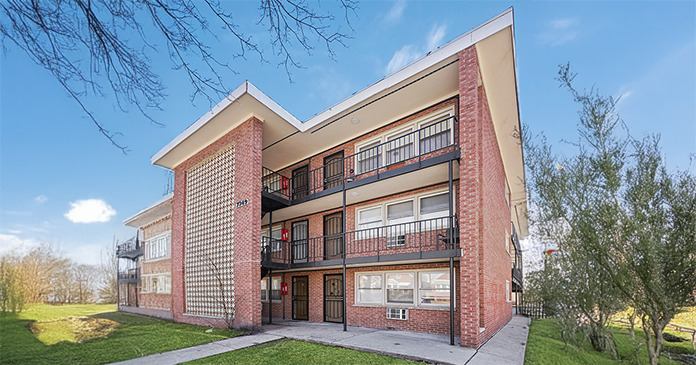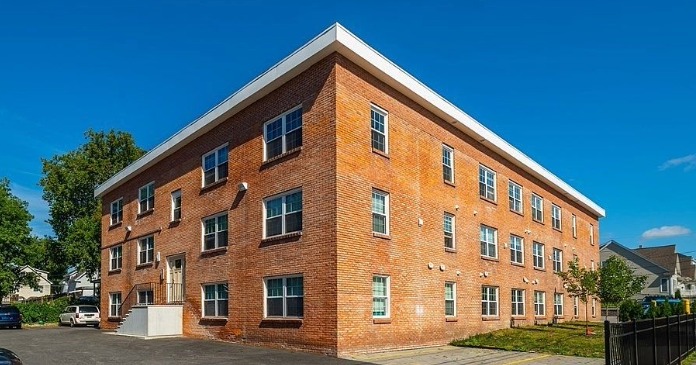GTIS Partners will spend $1 billion by 2016 acquiring single-family homes to manage as rentals, Thomas Shapiro, the fund’s founder said. That followed announcements this month that GI Partners, a Menlo Park private equity fund, expects to invest $1 billion, and Los Angeles-based Oaktree Capital Management LP will spend $450 million on similar housing.
“It’s a massive market,” Shapiro said in a telephone interview from New York. “We’re starting to see this as a billion dollar opportunity to buy rental housing.”
Creating more single-family rental properties is one of a series of programs introduced by President Barack Obama’s administration aimed at reviving the housing market. An S&P/Case-Shiller index (SPX) of property values in 20 cities has dropped 33 percent from its peak in July 2006 and 12 percent of homeowners with a mortgage are either delinquent or in foreclosure. In January, the administration revised its Home Affordable Modification Program, offering government incentives for mortgage investors Fannie Mae and Freddie Mac (FMCC) when they forgive debt on homes that lost value as a way of preventing delinquent borrowers from losing their houses.
Increasing rentals
Increasing rentals may reduce lenders’ losses on foreclosed and surrendered properties and curb declines in home prices, according to a Federal Reserve study Chairman Ben S. Bernanke sent to Congress on Jan. 4. Private equity funds began focusing on these investments in September, after the administration asked for proposals to sell the government’s inventory of foreclosed homes- about half of all houses seized from delinquent borrowers.
The S&P/Case-Shiller index of property values in 20 cities declined 3.7 percent from November 2010 after falling 3.4 percent in the year ended in October.
Even as prices dropped, the “seeds to a recovery are being planted,” Karl Case, cocreator of the measure, said.
The Federal Housing Finance Agency, which oversees Fannie Mae (FNMA) and Freddie Mac, plans to complete initial transactions in the first quarter of this year, offering some of the 180,000 foreclosed homes in their inventory to private operators as rental properties, Corinne Russell, a spokeswoman, said.
Public-private partnerships
The Federal Housing Administration, which also will participate in the rental program, had 32,170 real-estate owned homes seized from borrowers, also known as REOs, as of Dec. 31, according to spokesman Lemar Wooley.
Possible aspects of the program include public-private partnerships to share the risk and profits, “seller financing” guaranteed by the government and rent-to-own opportunities for tenants, according to a November memo.
“It marks the first time that institutional investors are really getting involved, and in the process providing a higher quality product to a tightening rental market,” Oliver Chang, a Morgan Stanley analyst based in San Francisco, said.
$1 Trillion liquidations
About 7.5 million homes with a current market value of $1 trillion will be liquidated through foreclosures or other distressed sales by 2016, according to an Oct. 27 report by Chang. That will add to the estimated 20 million single-family homes already operated as rentals, which have yielded annual returns averaging 8.1 percent since 1990, Chang’s report said.
Rentals can produce cash flows, known as a capitalization rate or cap rate, that reduce losses more than reselling foreclosed homes at a time of weak demand, the Federal Reserve report said.
“Preliminary estimates suggest that about two-fifths of Fannie Mae’s REO inventory would have a cap rate above 8 percent—sufficiently high to indicate renting the property might deliver a better loss recovery than selling the property,” the Fed paper said.
While there may be opportunities, investors should be cautious about borrowing to invest in markets such as Las Vegas, where a transient population and economy dependent on a single industry like gaming, make it hard to see an exit strategy, Kenneth Hackel, managing director heading securitized products strategy for CRT Capital LLC, said.
Track record
“For the kind of properties I looked at, and in most cases, capital markets aren’t excited to finance the REO-to-Rental marketplace at this stage,” said Hackel, who toured Las Vegas homes on the market. “Once you establish a track record and have some positive cash flow in place, then perhaps you can get some interest in having leverage. But I think as a first step, investors are best served by looking at this on an unlevered basis.”
The U.S. homeownership rate fell to 66 percent for the quarter ending Dec. 31, as low as 1998 levels and down from a peak of 69.2 percent in December 2004, according to a U.S. Census Bureau report.
“New households have a much higher propensity to be renters,” Thomas Lawler, a former economist with Fannie Mae, now an independent consultant in Leesburg, Va. “And a lot of folks who are losing their homes to foreclosure are now renters.”
Rental demand
Cerberus Capital Management LP, Deutsche Bank AG, Fortress Investment Group LLC (FIG), Starwood Capital Group LLC, TCW Group Inc. and UBS AG are among the financial firms that submitted responses to the federal request for information in September, according to a list obtained by Bloomberg through a Freedom of Information Act filing.
“We believe we’ll easily be able to raise $1 billion this year in total,” said Rick Sharga, EVP of Carrington Mortgage Holdings LLC in Santa Ana, Calif., which will manage the homes bought with Oaktree Capital’s money. “The ultimate fund could be several times that.”
Carrington manages
Carrington currently manages more than 3,000 rental homes for Fannie Mae, mostly in California, Arizona, Nevada and Florida, Sharga said.
Single-family home rentals can yield cash flows that are 300 basis points, or 3 percentage points, higher than apartments, said Gregor Watson, principal of McKinley Capital Partners LLC of Oakland, Calif., which has invested $100 million in the past two years, buying more than 400 foreclosed homes in the San Francisco Bay Area and other western U.S. cities. McKinley’s largest financial backer is Och-Ziff Capital (OZM) Management Group, a New York-based investment fund with $28.9 billion under management as of Nov. 1, Watson said. Jonathan Gasthalter, an outside spokesman for Och-Ziff declined to comment.
“This will be a new institutional asset class in the next 24 months,” Watson said.
Forming a REIT
GTIS, which has $2 billion of assets, expects to hold its homes about five years, waiting for housing prices to recover before selling, Shapiro said. If housing prices don’t rebound, GTIS can exit by forming a real estate investment trust with shares sold to investors attracted by the rental income, similar to REITS for multifamily, industrial or office properties, he said.
“Single family dwarfs any of those asset classes,” Shapiro said. “When you think about the number of homes that are going to be rented and institutionally owned, they’re going to become its own asset class.”
GTIS, which has invested $225 million in partnerships with homebuilders such as Hovnanian Enterprises Inc. since 2010, will hire in-house staff to manage the rental properties in each area, Shapiro said. He declined to disclose his expectations for returns on investment.
“We think the important thing is on the operations and management side as opposed to playing a numbers game, like I’m buying for 30 cents on the dollar to a 12 percent yield,” he said.
Buying in bulk
GTIS expects to buy homes in bulk from banks, Fannie Mae and Freddie Mac, Shapiro said. Properties will also be bought individually at courthouse auctions and through short sales, when lenders agree to sell for less than the balance of the mortgage, he said.
GTIS will start buying in cities in Nevada, Arizona and California—the states with the three highest foreclosure rates, according to RealtyTrac Inc.—and Florida, which RealtyTrac ranked seventh in December, Shapiro said.
“The key is being able to efficiently manage these homes,” he said. “That’s why we’re targeting select markets. Our intention is to rent them, to hold them for long term.”
Author: John Gittelsohn, bloomberg.com
















